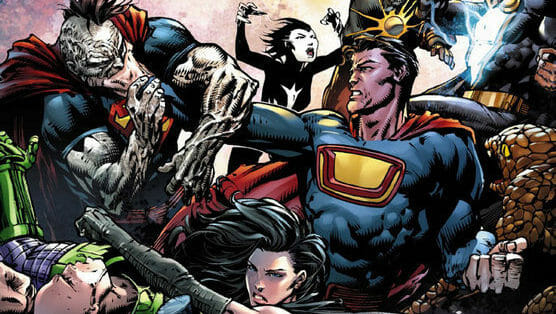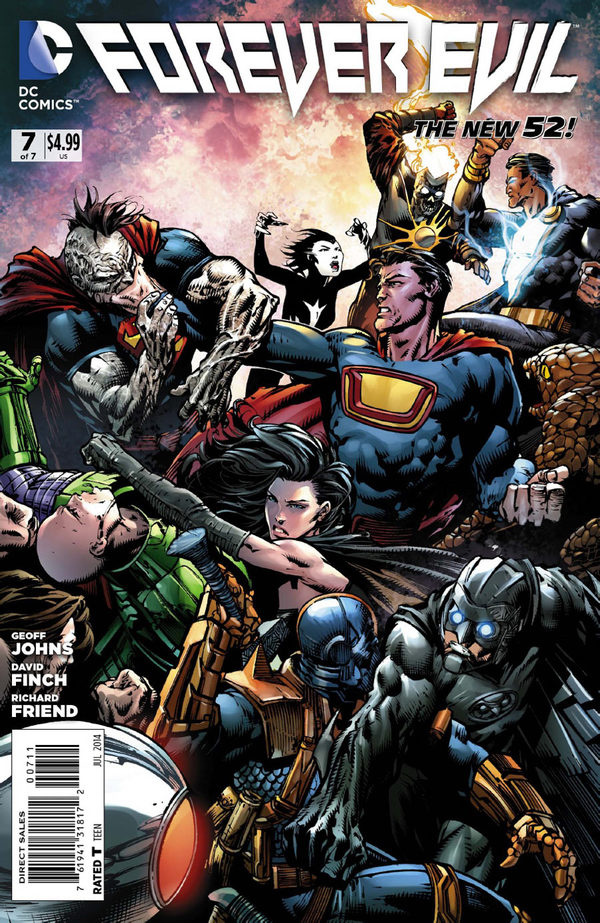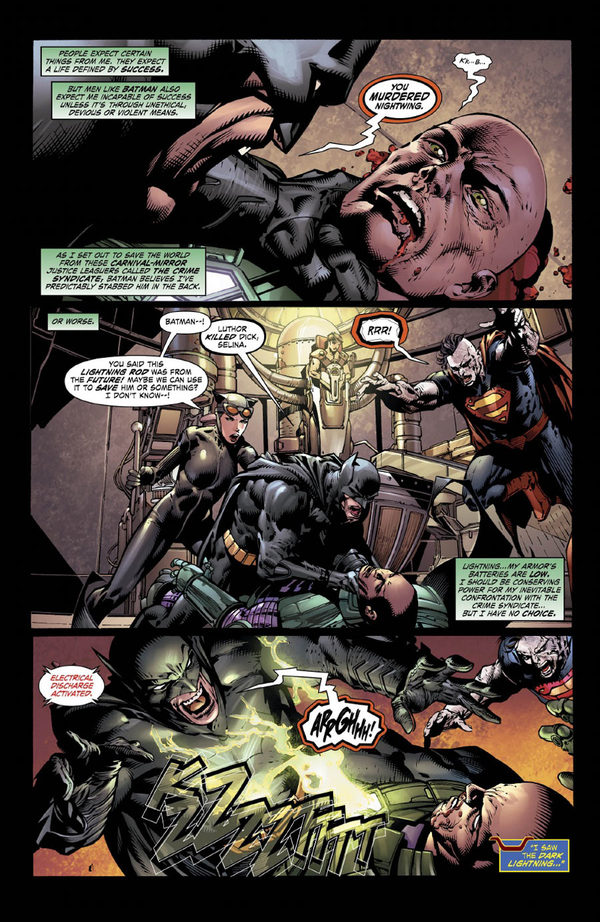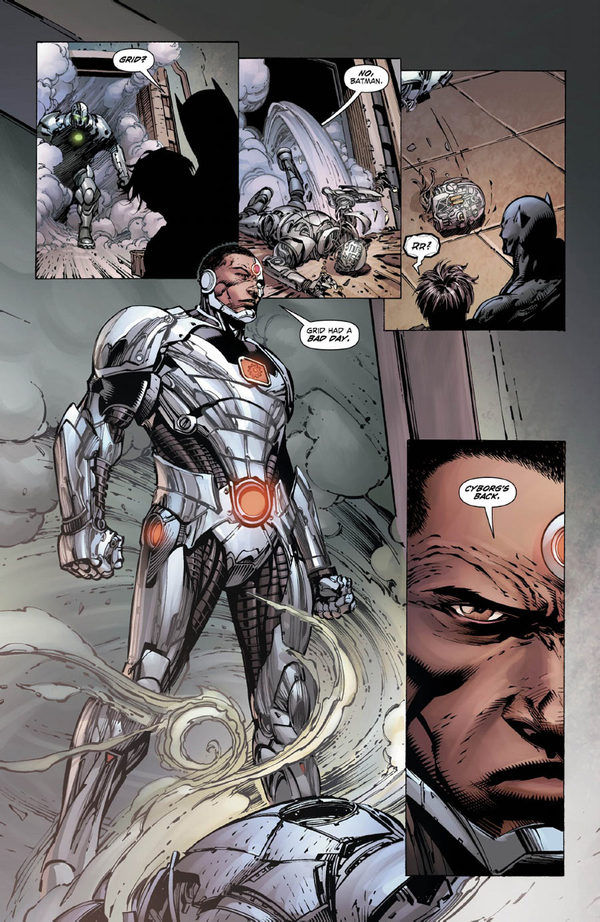
Writer: Geoff Johns
Artist: David Finch
Publisher: DC Comics
Release Date” May 14, 2014
Epic Spoiler Alert
The final issues of major crossover events arrive in two parts: the city-leveling fisticuff climax and the resulting aftermath. With a two-month delay and a series with such unforgiving brutality, Forever Evil #7 set the stage for an ending that could slip the bonds of the expected … but it doesn’t. Instead, writer Geoff Johns and artist David Finch conclude the DCU’s first crossover event with a whimper. With an event filled with unlikely heroes, uncommonly violent sequences and not a Kryptonian “S” in sight, Forever Evil paves a road of innovation to a destination that feels very familiar.
Within 39 pages, the mood transitions from bleak to bright quickly. Bruce Wayne and Lex Luthor continue their forced alliance as they try to concoct a way to save Dick Grayson from the mechanical clutches of the “murder machine.” From here, the subverted JLA known as the Crime Syndicate — with its all-star baddie lineup including Ultraman, Superwoman and Deathstorm — start to check out. The story splinters into a two-level structure with Batman and company looking for a way to free the good JLA members and Lex Luthor facing off against his own Earth-3 reflection, the Shazam-powered Alexander Luthor. After impressive battle scenes and some signature Luthor trickery, our mix-matched group of heroes best the alternate dimension baddies, the JLA is freed, discoveries are made and tracks are laid for new stories with a familiar villain.
DC did pick the writer best for the job. Massive, universe-altering crossovers dot Johns’ bibliography, including Flashpoint, Blackest Night and Infinite Crisis. He knows how to tell a sprawling story, and that’s still true with Forever Evil. In light of this finale, however, it’s more reasonable to call this series a pretty good Lex Luthor story than a big-name DCU event. Lex Luthor is our narrative anchor throughout the pages of Forever Evil, and by the end, it’s in Lex Luthor that readers see any substantive change at all. In fact, this whole story feels like it occurs in a vacuum. Within these pages, we never see how these events impact the world surrounding our heroes. Are people dying? Are cities burning? Are businesses being looted? Will anyone remember these events aside from saying “Remember when our smartphones and TVs had that cryptic, ‘This World is Ours’ message on them? That was weird.” These issues may be explored in peripheral series and issues, but as a standalone story, the absence of scale haunts this narrative.
Only Lex Luthor is truly impacted. His Frankensteinian creation Subject B-Zero, nicknamed Bizzaro, falls in combat, and the strong business magnate falters with overwhelming loss. We now see him willing to aid inheritor Ted Kord in following his deceased father’s footsteps, despite Luthor having plotted a hostile takeover of Kord Industries in the opening issue of Forever Evil. Oh, and he also saves Superman from certain death by removing the Kryptonite lodged in his brain.
What?
All of these moments of uncharacteristic kindness call attention to this story’s title. At first, readers could assume that Forever Evil points toward the villains of Earth-3 who are, for the most part, completely unredeemable. Then again, it could also be about the group gathered together to fight this new threat, including Luthor, Bizarro, Deathstroke, Sinestro and Black Adam. But upon further examination, Forever Evil is about the growing dichotomy inside Luthor.
One of the great villains of the old DCU, Luthor was a man of unquestionable ruthlessness. For him, the ends always justified the means, and his desire to kill Superman defined obsession. Now, especially after the events of issue #7, everything has changed. It’s no new tactic to turn a once beloved villain into a hero. We see Catwoman struggle with the dilemma in this very issue, but Johns doesn’t exactly cement this direction for Luthor either, so it’s unclear what this entire story accomplished short of setting up the universe’s next cosmic threat.
In the end, Forever Evil is a joyride. Observing the gruesome opposites of our favorite heroes catalyzes a sequence of seven violent and fast-paced issues. If you go into Forever Evil expecting an epic yarn of destructive fantasy and depth, though, you’ll be left feeling a bit empty by its conclusion. But through the lens of a Luthor character study, Forever Evil could be remembered as one of the best.
![]()





